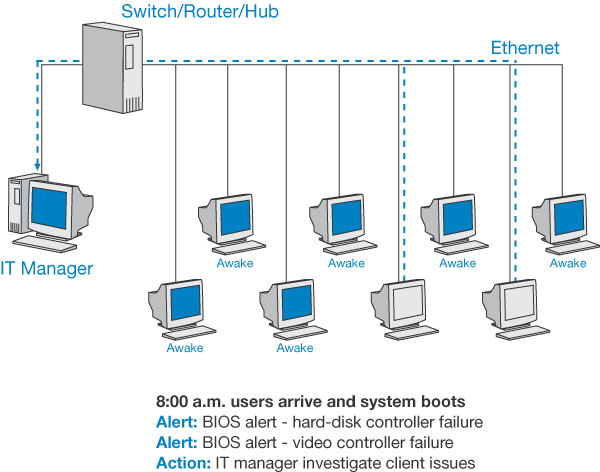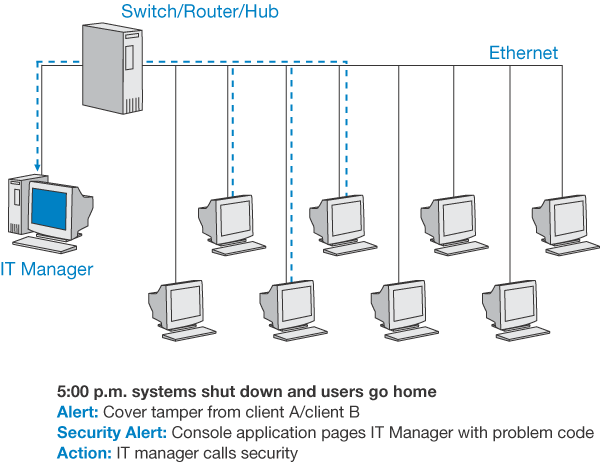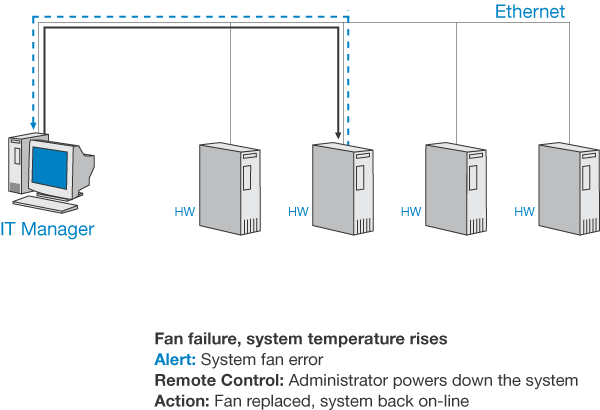
The following scenarios demonstrate how network managers can realize the three principal benefits of ASF- enabled alerting: system health monitoring, asset management and remote control.
In this scenario, users arrive for the day and systems boot. Two alerts are received at the management console:
· BIOS Alert – Hard-Disk Controller Failure
· BIOS Alert – Video Controller Failure
The IT manager now knows what the problem is, even before an end-user calls for help, and thus can focus on fixing the problem versus diagnosing it. See Figure 2.

At 5:00 p.m., systems shut down and users go home for the day. Later, alerts are generated and received at the management console:
· Alert – Cover tamper from client A/client B
The console application pages the IT manager and provides a specific problem code. The IT manager calls security. See Figure 3.

During the workday, a fan failure occurs and system temperature rises. An alert is triggered to the management console:
· Alert – System Fan Failure
In response, the administrator remotely powers down the affected system to prevent potential heat damage to the CPU and memory. A technician is scheduled to replace the fan and bring the system back on line. Clearly, this gives IT the ability to move from purely reactive measures to proactive problem resolution. By exercising control from a central location to avoid catastrophic failures, IT managers can generate huge savings and begin realizing the true potential of systems management. See Figure 4.

Copyright © 2002 Intel Corporation
Legal Information
Last modified on 6/25/03 4:23p
Revision 4